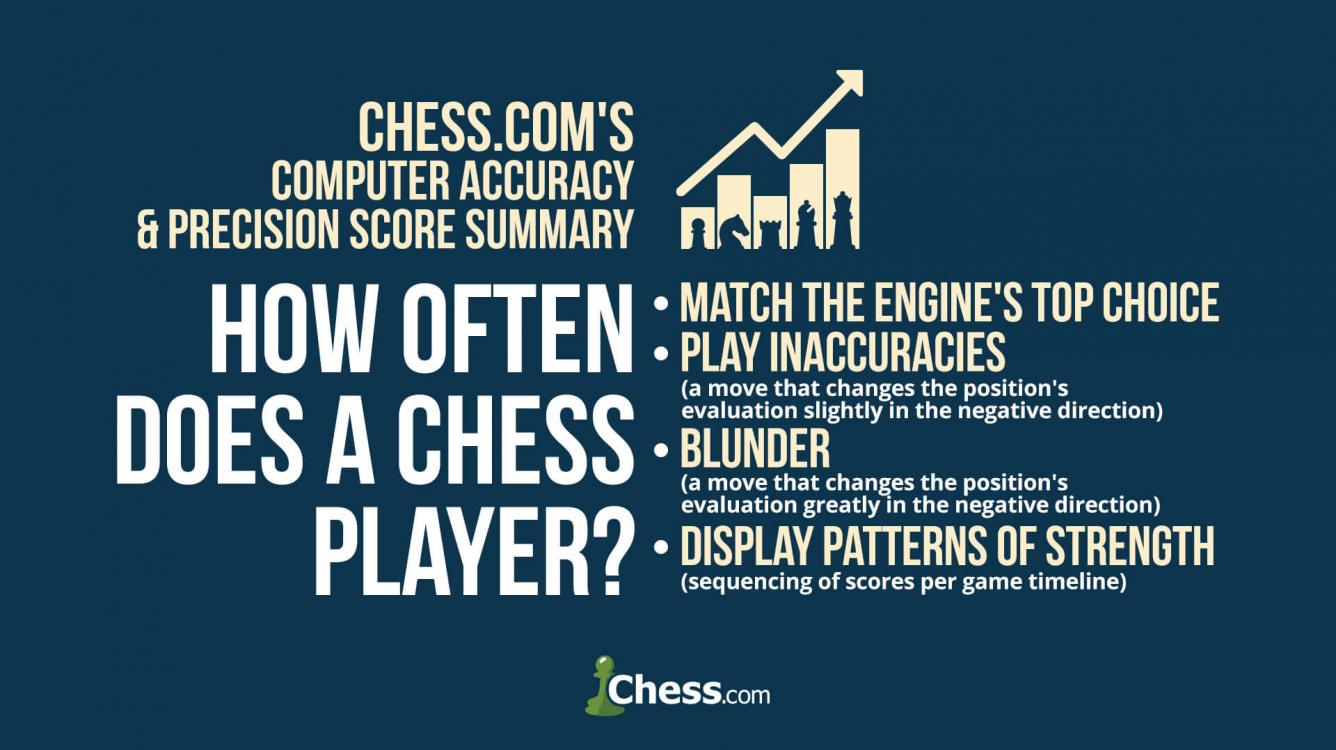
Better Than Ratings? Chess.com's New 'CAPS' System
One of the most exciting projects I've contributed to since joining the Chess.com team (eight years ago and counting) is being revealed today.
Chess.com's Computer Aggregated Precision Score (or CAPS) is a tool that evaluates the strength of play for any chess player, or the quality of moves of any chess game.
Have you ever found yourself explaining to a non-chess player why a random number in the 2,700s is where most the best players are ranked? ![]() Unlike standard ratings, the CAPS system applies a score from zero to 100 percent to a given game, or a set of the player's past games.
Unlike standard ratings, the CAPS system applies a score from zero to 100 percent to a given game, or a set of the player's past games.
A CAPS of zero percent means a game played with one of the worst moves on every turn, and 100 percent is a game where only the top choice of the world's strongest chess computers was played on every move.

After reviewing the game under the CAPS microscope, the system then applies a value (a grade, just like taking a test in school). There are several factors considered:
- how many top moves (moves that matched the engine's top choice or were equal in score to that choice)
- how many inaccuracies (a move that changes the position's evaluation slightly in the negative direction)
- how many blunders (a move that changes the position's evaluation greatly in the negative direction)
- patterns of strength (our own algorithm that determines the sequencing of these scores per game timeline)
By reviewing these factors and several others, a player receives a score that can be compared to other great players of the past and present. We also do this for games played in multiple formats (over-the-board standard games, rapid, blitz, bullet, etc.) to determine what a player's CAPS change is from format to format (as the time control speeds up and different opponents are faced).
Unlike an Elo rating, CAPS is calculated according to an objective, single-player criteria (meaning it has nothing to do with rating points gained or lost for results against opponents of different ratings).
It is a measurement of you (the chess player) against the most accurate possible move in the position according the world's strongest engines.
A good argument for the CAPS measurement having nothing to do with the strength of opponents is that a player like Magnus Carlsen (currently rated 2853 in the live list) might win 10 games in a row against a set of opponents with an average rating of 2730. Under standard rating systems, he might not gain many rating points for this winning streak.

The CAPS measurement of those same games, which takes the actual quality of the moves into account, could show just how accurate and amazing his play might be during this streak. It might also reveal if his wins might not have been the most accurate games, full of inaccuracies or blunders by both sides.
CAPS is less about comparing ratings of players to their peers, and more tuned to comparing current play to the best possible play and the best possible moves available in each position.
This means that you can compare the CAPS of two players who have never met and could never meet. You can even compare the CAPS of the same player in different time controls and at different ages.

Below is a graph that shows what someone's CAPS might be at the given rating levels currently used by the chess world to measure someone's chess skill.
Note that it might not mean you, as a 1400-rated player, will always have a CAPS of 79.189 in your games. For example, "timely blunders" that might turn a win to a loss in a single move are not easily measurable in this formula. However, with enough data (games reviewed) your overall CAPS is likely within the target range.

As Chess.com continues to find even more ways to measure the quality of chess players, both now and throughout history, we invite all of you to leave your comments on our idea and methods here! We are working all the time to perfect a system that could help all chess players to truly understand how, when, why and where they are making chess mistakes, helping all of us to become the best chess players we can be!
GM Robert Hess is using this project to make a statistics-based preview of what might happen between GM Magnus Carlsen and GM Hikaru Nakamura in the Blitz Battle final on Thursday, Oct. 27.
Click here to read his take on how these stats weigh into a grandmaster's practical predictions for the match!







